I have been made aware that a Fairfax journalist singled me out in an article yesterday, as an example of a person who is not sharing/continuing to view again and again pictures of a dead 3-year-old human being named Aylan Kurdi. Some readers felt the writer implied I was an example of someone ‘turning away’ and ‘avoiding the horror’ of Syria and the plight of refugees like Aylan (to quote the article), and having read it, I think that interpretation is easy to make. I believe it’s worth noting there is more to the conversation and the complex ethics here than simply sharing certain images or ‘turning away’.
As someone who was in Syrian refugee camps just 3 months ago, and as a long time child rights advocate I believe in preserving the dignity of all children, in all situations, including the dignity of refugees, and that extends to the ethics of photographing and publishing images of children. That is my personal choice – not to share graphic, identifiable images of the dead who by nature cannot have consented, regardless of nationality – whether they are Australian or Syrian. I also speak out against the use of identifiable images of children taken and published without the consent or knowledge of those children or their parents or guardians, regardless of who those children are. Many advocates working in child rights or child protection take a similar view. News journalists sometimes have a different view regarding what images and footage are appropriate, ethical or in the public interest, and also have reasons for that view. In this case various news agencies have used different shots with varying degrees of identifiability and graphic detail depending on their standards and position. Some choices do not clearly show the face of the deceased, for example. (In fact, some debates on social media about the use of the images are not even about the same images. There is a selection being circulated.)
Some arguments for using particular images are very good. The conflict in Syria, which is the largest humanitarian crisis in the world but has been under-reported in mainstream journalism in terms of the human cost, provides a difficult case in point. What does it take for real change to occur? A shocking series of images of the innocent dead, of which there are far too many? Perhaps. There is hope, as some in political power talk of change and action, and yet other politicians have so far used the very same images to justify existing policies, rather than seeing them as a call for significant change.
As a parent of a young child I also wish to protect my own child from seeing graphic and repeated images of death until she is older. This is something it is increasingly difficult to do while we circulate, again and again, in the news and on our own social media feeds the shooting deaths on TV of journalists, as happened just last week in Virginia with the murders of Alison Parker and Adam Ward, or while we publish front page images and circulate videos of ISIS beheadings, often against the explicit wishes of the families of those victims, as in the case of murdered journalist James Foley.
Context matters and context is sometimes lost when circulating an image. On social media in particular, images are often circulated without the story to go with them. Already there are memes of Aylan’s lifeless body. Some of these include slogans, logos or manipulations of his body. This extensive social media use is now well beyond the initial news media reporting. Aylan has no choice in how his death or body are portrayed, and neither does his family, including his aunt who is reportedly ‘asking people to stop using [the] drowning photo’ as she wants the ‘world to remember him smiling ‘. His bereaved father now hopes – not without reason – that the international attention sparked by the images may finally result in actual, substantial change. Abdullah Kurdi has seen images of his dead son on every newspaper, has been swamped with media attention, and has been very brave in his response. He lost his sons Aylan, 3, Galip, 5, and his wife Rehan in the same tragic incident. Outside the morgue where the bodies of his family are held, he reportedly said, “We want the world’s attention on us, so that they can prevent the same from happening to others. Let this be the last,” according to the Reuters news agency. This is something akin to consent after the fact, at least. Sadly, he also told mourners that he blames himself for their deaths. What an impossible weight to bear.
Yes, let this be the last. Please.
Aylan was a person, not only a body on the beach. I share his story widely on social media with images of him as a living child, and yes, like most I have seen the images of his death in the news multiple times. Choosing not to share images of his body on social media is not the same as ‘turning away’. I have looked at the issues of refugee children in sometimes confronting ways – standing before them, acknowledging them, hearing their stories, and offering my voice as a journalist and UNICEF’s National Ambassador for Child Survival to help their voices be heard and to try to bring about better policy and wider understanding. I have been with Syrian refugees in one camp while another nearby burned down, killing children and adults. I have seen death. I have seen the dying. I have spoken to Syrian child brides and victims of rape used as a tool of war and reported on those stories – something I will continue to do. The way to help Syrians and other refugees escaping conflict is not only by clicking ‘share’ on an image of their lifeless bodies. People who refuse to do so should not be dismissed as ‘avoiding the horror’. Some of them may in fact be a great deal closer to it.
If you are interested in how to help refugee children like Aylan you can go to the appeal at unicef.org.aumoss or donate to other reputable aid agencies, and write to your local member asking for change.
Regardless of whether we personally agree with or participate in the circulation of particular images of dead refugees, and regardless of our thoughts on the use of trigger warnings, we must agree that being shocked by these distressing images is NOT enough.
Shock must be matched by action.
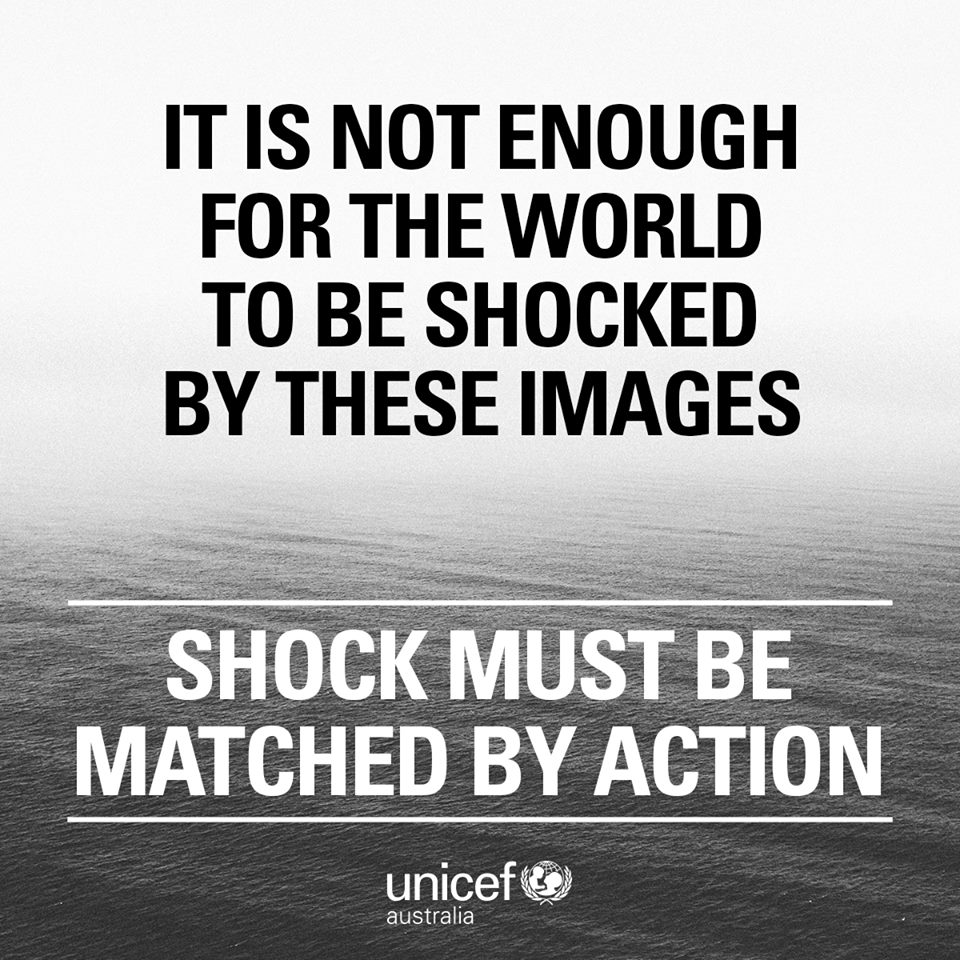
To donate to UNICEF’s Syria Appeal, click here.
For more reading: The Ethics of Children, Death and Photography, Centre for Journalism Ethics
* Photograph, above, taken my photojournalist Alessio Romenzi for UNICEF Australia.

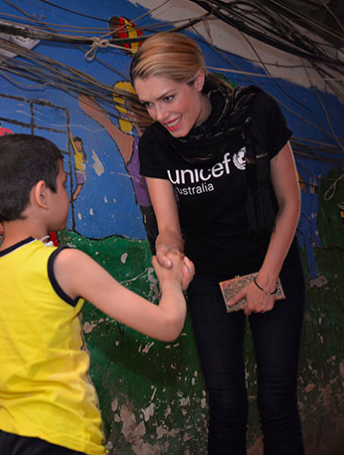
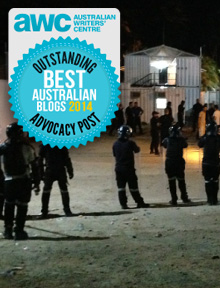
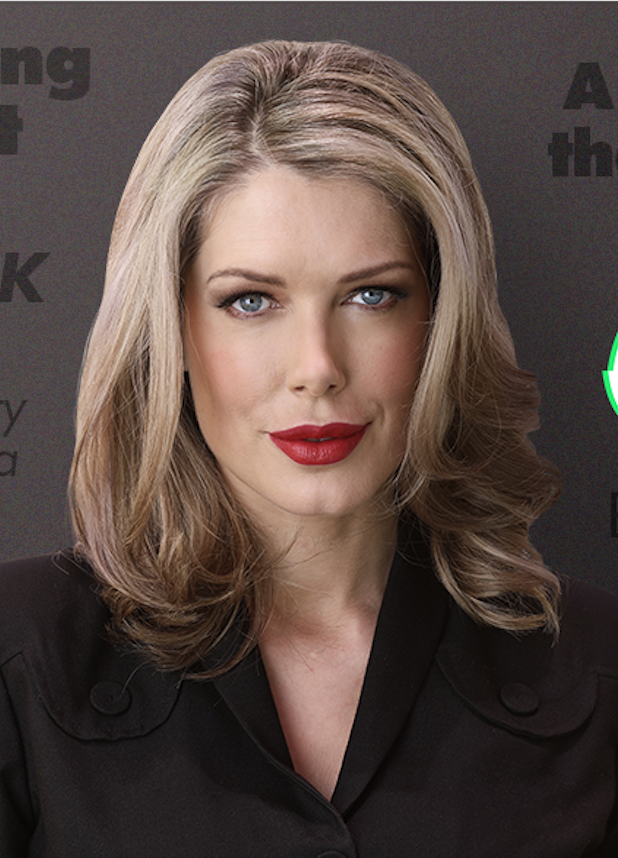
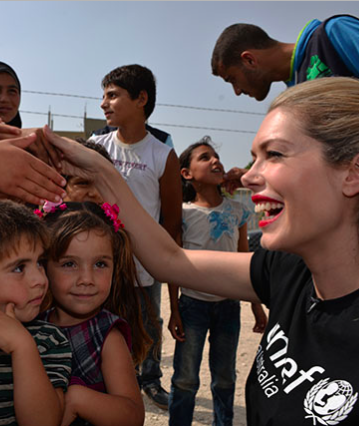
The image of a dead child should not be circulated and shown. Show the poor baby some dignity and respect.
An interesting perspective, Tara, and not one that I had previously considered. Which, I suppose is quite hypocritical, seeing as I respect my children by asking their permission before showing their pictures to other people. You constantly challenge my ways of thinking – something that I greatly admire you for.
I shared the picture of Aylan, along with his story and a link to an online petition (although I’m not quite convinced at how much of an impact they have) because I suppose in my own armchair activist way I felt like I was helping in making others aware of the severity of the situation. I saw the image and immediately saw my own 3 year old boy lying lifeless on a beach without his family and I felt that the ‘conversation’ that is happening on social media around the refugee crisis is not enough. I was experiencing my own reaction to his photo and hoped that others would be equally as moved to take action.
Although now I see that perhaps my approach was misguided and even disrespectful to Aylan and his family… I’m still left wondering about how to get the message across when I know that the majority of the stories that are shared about this situation are very easily skimmed over? I am not saying that the shock of seeing a tiny, lifeless boy is the answer, but I do know that it got the attention of many many people who would otherwise have not noticed. I agree, however, that attention does not necessarily equal action. How do you inspire action on this topic?
I can appreciate the points being made here. At the same time, given the boy’s father was reported as saying he hoped the image would be seen by the world, surely he should be the ultimate arbiter of how his son’s image is used?
http://www.aljazeera.com/news/2015/09/drowned-refugee-aylan-father-150903151607625.html
The action beyond sharing is direct, practical support where possible, and political pressure on leaders.
Hi Maggie,
Agree that Aylan’s father, who is directly quoted in this piece (it is the same as the article you have linked) has said he hopes the resulting media attention brings about change. But saying ‘surely he should be the ultimate arbiter of how his son’s image is used?’ ignores that he is not in fact the ultimate arbiter. The images of his dead son and particularly the memes of his son are by now out of any person’s control, let alone family members. This well outside of the initial news media sphere, and that is one issue I am pointing to here.
Best wishes, Tara
Thank you Tara, for putting into words what I have been feeling every time I delete another posting of that image on my timeline.
Thank you, Tara.
I have wrestled with this all week. Speaking for myself, I would never post such an image – probably because, as a bereaved parent, I consider my grief a private concern and have known the pain of seeing my son’s body lying in a morgue.
Having said that, there is something about humankind that finds a wider understanding only when a connection is made through knowing about the life of another individual or individuals.
We have been told stories since we were children. From the Little Red Riding Hoods of the cradle to the Robin Hoods of youth; from the Anna Kareninas and Jane Eyres to the Oliver Twists and Frodo Bagginses, to the Romeos and Juliets… we identify with the tale of the specific; with characters we would like to know or be; with the brave, the tragic, the quirky; with figures who represent our own hopes, fears and foibles.
Likewise, the names of Jesus Christ, Joan of Arc, Florence Nightingale, Nelson Mandela stand, often, as symbolic. It is much more human to put a name to a movement or a moment than it is to record numbers.
I’m not defending those who posted the images of Aylan; nor do I wish in any way to belittle the deaths of all those caught up in desperate and appalling conflicts. I am trying only to make some vague sort of sense out of the events of this last week.
Thank you again for the courage of your work with UNICEF and the thoughtfulness of this article.
Thank you for writing this post Tara – it so articulately explains the complexities.
We must change this. We must. It can’t keep happening.
Even before these images started popping up in my feed, I couldn’t comprehend how inhumanely we have been behaving – lots of tears and pent up frustration here. I can only imagine how it must feel for you, having met refugee families yourself, and having seen much of their struggle first hand.
As you say, being shocked is not enough. We must act. This has to change.
Thank you for taking so much action to help create change – and to help move others to do so too.
Now I’m off to hug my little two year old boy, and to think further about how I can act and do what I can to make a difference here too.
Your right on one thing, that it’s out of one’s hands when one consents to circulate their loved ones in this light on social media. There are pros and cons and neither is right or wrong. It will wake ppl up to the crisis, but it will also be unbearable.
Thank you for this Tara. I was mildly hammered and also supported on Facebook for expressing much the same views, called an “existentialist,” an “absolutist,” and a “cynic.” My view is that we don’t need images to remind of us what we should already know. Images of dead children are not required to either create the institutions or to to fix the problem, or for those with power and skill to know exactly what to do. The UNHCR and other agencies are in the field and know exactly what to do. Donor countries, including the US and Australia, have not been meeting their agreements over the past few years to avert the crisis. Australia has cut its foreign aid as we know. If they had acted sooner and more effectively, the child would not have drowned. Now it is too little too late. Thousands of children have died in Homs and Mosul, in Iraq and Syria, and throughout the region over the last ten years. Images of that have been around since 2004 when refugees flooded into Syria and Jordan from Iraq and then from Syria into Turkey and Lebanon, and now into Europe. They did not then and do not now need our outrage to merely do what they are paid to do and could have done much sooner. My concern and frustration isn’t really with anyone upset by recent images, but with those who have not done enough over the past decade.
Hi Tara,
I just noticed a typo in the excerpt and wanted to let you know. ‘Personal’ is missing its ‘ly’.
Look forward to hearing you speak on the 16th of June, 2016.
Judy L.
Victoria B.C. baby too.
Dear Judy,
Thank you. I have corrected the typo.
Best wishes, Tara